Foundations of Orality
Module 1
Explore God’s design for communicating among people created in His image. How can we communicate with higher impact and scale? We will discover how orality affects every aspect of communication.
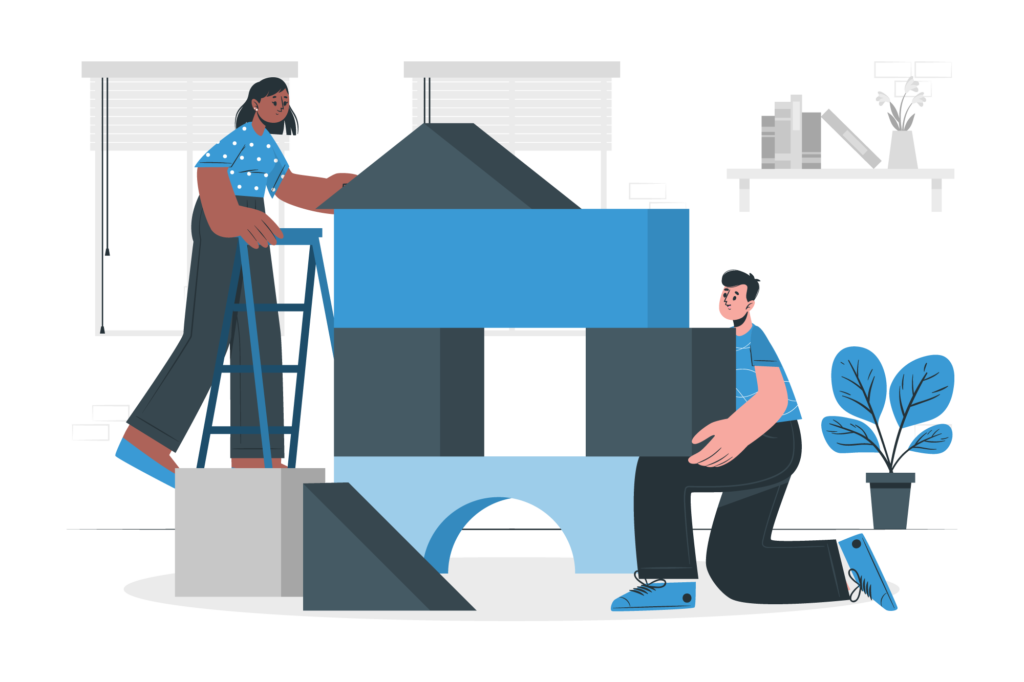
Lesson 3 – Orality Bridges the Gap
In this lesson, we will tackle the Orality Gap, the Excluded Middle, and the 15 Traits of Orality and introduce you to the Global Orality Mapping Project (GOMAP).
Click the arrows for more details.
This box provides general information on how our lessons are structured
The content of this site is hidden at first and meant to be revealed once the previous task is complete to guide you along the learning experience.
This is a resource for you! The lessons can be studied independently, in groups, or as part of the IOS certification program. Use it to learn or to 🚂 train others.
We encourage interaction with the material and with others whenever you encounter these emojis 😃🤔🤯.
This frame indicates a story, example, or case study.
Please leave your observations, findings, and links to additional resources in the 💬 comment section below, as they will benefit others. Enjoy!
Orality Gap
😃🤔🤯 Who was your favorite teacher? Why?
An orality story
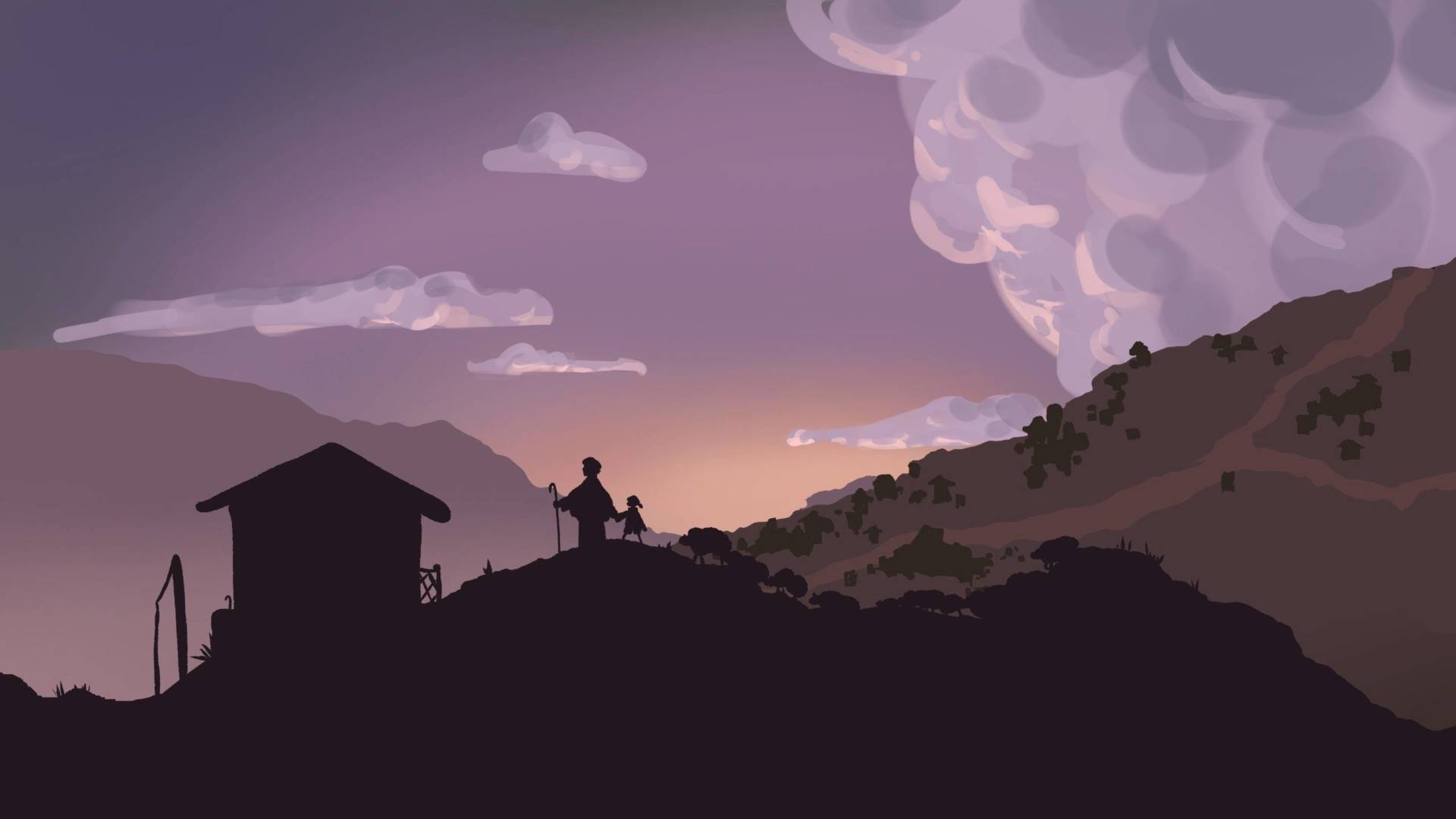
🎞️
Watch the story of The Teaching Shepherd Boy.
The Teaching Shepherd Boy
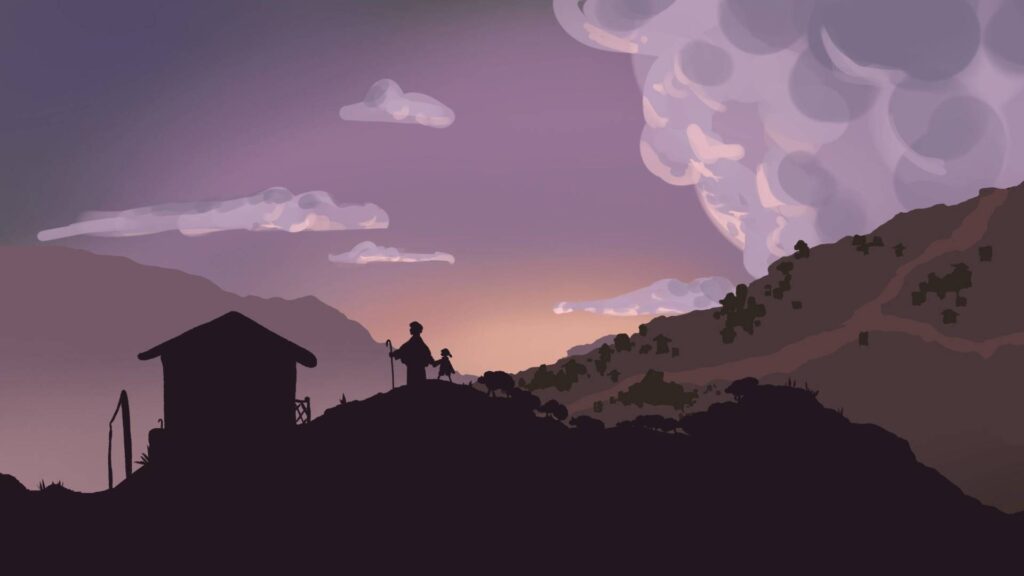
In the Himalayan Mountains, life starts very early in the morning. Before the sun rises, shepherds bring their flocks to graze while the women stay home to work the gardens and to feed and care for their families. Chung was used to this life from the day he was born. He knew every hill, gorge, and source of water without ever having held a map. He learned every landmark and peak surrounding his village, how to read the sky, the plants, and every kind of animal… sometimes the hard way! All of these were etched in his soul through stories, songs, and even the village dances. He knew about every god-type creature presiding over these many mountains and how not to offend them or when to appease them.
It was not easy for his parents to send Chung to school, but they knew that a coveted college degree would benefit the whole family. His parents barely finished elementary school and could only dream for higher education. NO one had that kind of money. No one was that smart here in the mountains. Their “smartness” was tied to the earth and to each other – not books. They knew how to read and write but struggled to understand what they read – it was not in the language they spoke! Reading and writing was only needed to fill in government forms, read the posters plastered to walls by politicians, and occasionally to read a letter. Chung was a smart boy and full of promise, but his father needed Chung’s help with the herds. He struggled to study at night, often falling asleep with his books and he was frequently absent from school. Chung excelled in reading and writing but other than the schoolbooks he had nothing else to read and his reading comprehension was poor because of all the strange words no one in his village used. He preferred to learn by listening to stories from other shepherds especially at night as they gathered around the fire. It was so much easier than the reading and writing of his assignments.
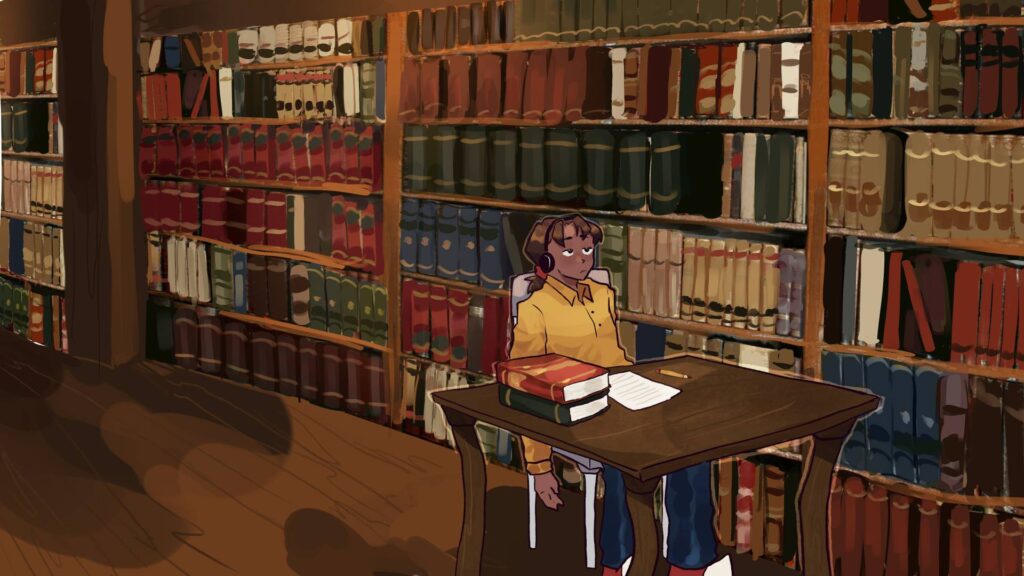
Still, as the years went by, Chung drove himself to excel in school. His whole village rested their hopes on his success. He studied extra hard and earned a slot in college. He was only able to qualify because his government started a program that allowed poor rural students to get into college with lower qualifications. Along with this program, the government also provided a scholarship that paid for Chung’s tuition.
Chung’s parents did their best to provide for him by sending money for housing and food. Chung knew that it was a big sacrifice. Living alone in a bustling city often prompted his mind to drift off and imagine what was happening in his mountain village that he could see in the far distance when the sky was clear. He longed to be there for the rituals and festivals, the singing of their songs and dancing out their rich traditions. And the stories! He could almost hear the voice of his grandfather. He survived on the quick cheap street food and often thought about how his mother took a long time to prepare delicious food from fresh vegetables and savory meat from their own flock. In Chung’s village, the slaughtering of animals needed to be done in the early morning before sunrise and in absolute silence. This way, the spirit of the animal would not be awakened and scared causing it to leave the animal. People in Chung’s village believed that this meat gave the people extra strength. Strength that Chung needed badly.
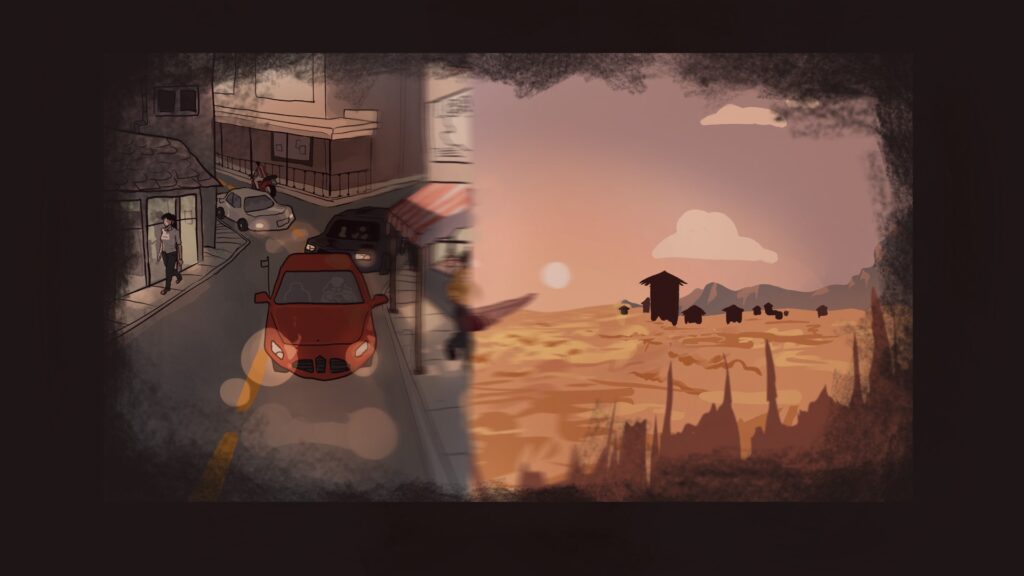
Sometimes, during seasonal school breaks, Chung would visit his family in the mountains and enjoy the simplicity of life. He hid his Nikes in his school bag, slipped on his sandals, and headed out to join his father in bringing in the sheep. For a few weeks he would work at the farm and with the herds. Especially during the harvest season, every hand was needed. But the highlight for him was the traditional village thanksgiving rituals. The elders would sit together stationed around their piles of produce and tell generational stories of their history, while the women donning their lavish colorful dresses would dance and perform to rhythmical bamboo instruments. Every family prepared food from their produce and livestock. The whole village participated. These celebrations were loaded with meaning and gave the villagers their identity as a group. Still, Chung saw that the standard of living in his village was lower than that of the people in the city.
Through it all Chung knew that a college degree might be his family’s only chance to achieve a higher standard of living and to no longer be looked down on by the visiting government officials, NGOs, or even the church mission teams that came to aid them with their needs. So he gave it his all! He saw, what difference a college degree could make. Despite having exceled in lower grade levels at the school in his village, Chung now struggled with his assignments more than most. His classmates seemed to have no problems at all submitting their papers. He felt that his brain was somehow wired differently and not capable of putting out what was required of him in college. Without adopting a new way of thinking, processing, and remembering what he learned, Chung would fail. It required navigating a steep learning curve and came with plenty of setbacks. Still, Chung learned to master college courses and city life. Then without realizing it, by the time he graduated Chung loved reading books and his structured newfound ways of thinking, outlining, and putting his thoughts in writing allowed him to earn good scores in his subjects.
Unlike in his village, learning was very technical, and facts were presented as lists of prepositions to be memorized to recall during exams without real life experiences. It was not a communal or collective experience but an individual effort to stay afloat. At least now, Chung had access to all the books he needed in the library – a place that was so unusually quiet that Chung used his headphones to listen to some music while studying. Instead of taking four years, Chung needed five years to graduate. Early on, he had needed to repeat a few subjects and even one semester as he was forced to stop going to class and work at a fast-food restaurant to help pay for his mother’s hospital bill. Nevertheless, it brought great joy having his parents sit proudly in the audience as Chung walked on stage to receive his diploma. He did it! Chung was now the first from his entire village to graduate from college. His parents gladly took on debt just to travel to the city, and on top of that there would be a costly celebration with and for the whole village. But that was a problem for another day. The graduation was the focus today and Chung’s salary would be sufficient to supply the needs for the honor they all shared.

Indeed, Chung also passed the teacher licensing board-exam. He was now a teacher and got immediately hired in a public school. This guaranteed him a stable income that was sufficient for him and his family. Then after one year of teaching on probation at a school in the city, he was assigned to teach in a village neighboring the one where he grew up. This came about because the department of education took notice of how Chung’s students excelled, and the district had mandates to boost the learning of children in remote villages. In fact, this government program caused many of the best teachers to be reassigned to remote areas where children struggled in school. The program intended to minimize the learning gap between the lower functioning rural students and the more successful urban populations.
Despite Chung’s and his colleague’s best efforts using the latest up-to-date textbooks along with the curriculum and teaching methods that worked so well in the city, the children in the villages did not perform well on the standardized tests. Some scores even went down, and the students dropped out altogether. Chung became more and more frustrated. He started to think that people in the city might simply be smarter that those lazy students in these mountain villages. Chung did not know why he was not able to connect with these children. After all, at one time, he was just like them, he lived the same life experience, and even spoke their local dialect.
Because the teaching methods seamed ineffective Chung and his colleagues called a meeting with some parents. One of those “parent-teacher meetings” like they had done during his semester as a student teacher. The parents expressed their concern that they could not help their children with their strange assignments. Further, the children sometimes were needed to help at home and in the fields. School was a luxury. Farming was a necessity. This meeting was already frustrating, but it became shamefully embarrassing when some elders from the surrounding villages arrived at the meeting. They accused the teachers of dishonoring them and their long-time traditions and undermining the established village hierarchy. These young teachers had called for this meeting without consulting them ahead of time.

Chung spent a long sleepless night after the meeting. He pondered on what had happened and started to question himself. The barrier between him and the students could not have been cultural, not lingual, not even relational. Then it slowly dawned on him. He remembered his own path of learning, his struggle in school, his craving for the stories around the fire under the Himalayan star-filled night sky. He flashed back to the stories and proverbs related to the creatures in the valleys and on the mountains. It connected: the way he learned about life, about their history, and how it all came together during the annual village celebrations and festivals. Chung could now lead his students, his children with their hope for the future, by learning to teach all over again… in ways they could receive new knowledge, process, and remember it, and even pass it on to others…
😃🤔🤯 Reflect on the story. Can you identify with any character or situation of the story?
No bridge to cross
Imagine you live in one of the houses on the mountain on the left side of the picture.
One day, you take your 🚴🏻 to visit your friend in the little town. Overnight, it rained hard in the mountains, and the little creek turned into a river.
😃🤔🤯 Move the slider on the picture below to the right side. What do you need to be able to return home?


The Orality Gap in Education
80% of the world, or 8 out of 10 people, favor oral communication methods like music, arts, and drama over written text.1 The dominance of Western text-centric education standards further widens the gap between oral and text-reliant cultures. The COVID-19 pandemic even widened the gap.2
It is no secret that the higher the academic level of education, the less we rely on orality and the more we focus on written text.
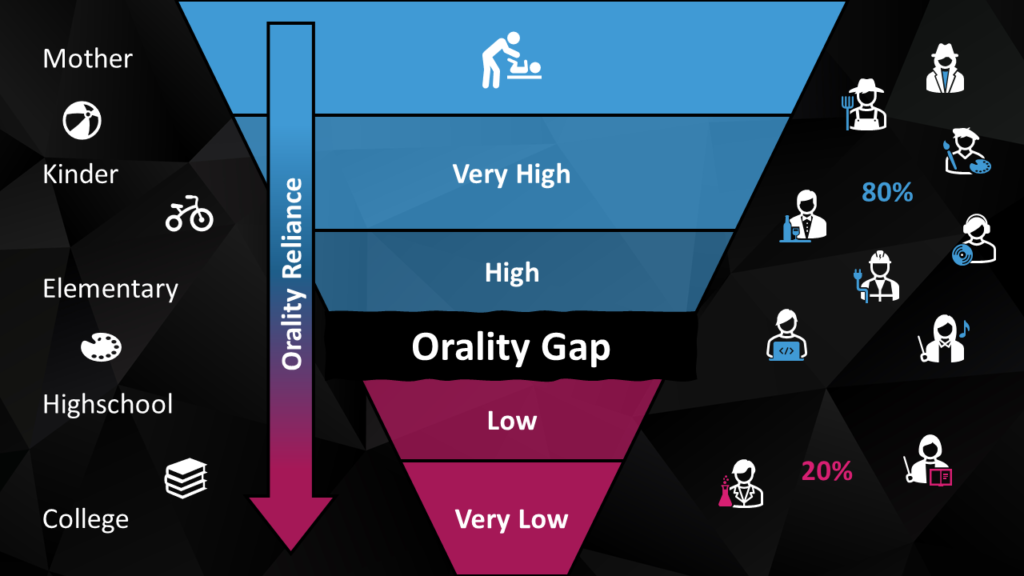
Intentional or not, this creates a gap between pupils and teachers, theological educators and students, pastors and church members.3
😃🤔🤯 In your school, church, or ministry, find real examples of the orality gap. How does the disconnect between teacher and student affect learning? Does the teacher or the student need to adjust?
Building bridges
😃🤔🤯 In your context, who are the people mostly affected by the orality gap? Does the orality gap corelate with certain demographics?
In Exodus 3-4, we can read how God called Moses to free the Israelites from Egypt. Here is one verse of that passage:
Eternal One: What do you have in your hand?
Moses: My shepherd’s staff.
Exodus 4:2, VOICE
😃🤔🤯 Make a list of at least 5 things that God has gone using Mose’s staff.
What is in your hand? Or better asked: What are the learning preferences of the people we like to reach with the Good News of the Kingdom?
Excluded Middle
😃🤔🤯 Discuss with different people superstitious beliefs (interestingly, even most people who don’t believe in the supernatural have these beliefs). Are there different explanations for the same phenomena?
Explaining the unexplainable
Paul Hiebert first introduced the “Flaw of the Excluded Middle.”4 He explains that there is a gap between the other-worldly cosmic beings and our tangible experienced world.
In folk religion, this gap is filled with unseen spirit beings but part of this world.
On the other hand, the technological advancements of the Enlightenment try to find explanations for everything.


😃🤔🤯 Reflect on both sides: What are the spiritual consequences if we explain everything with invisible spirit powers? Conversely, what are the spiritual consequences if we explain everything purely materialistically?
Answering the wrong question
Despite having access to doctors, many people still go to the traditional faith healer.

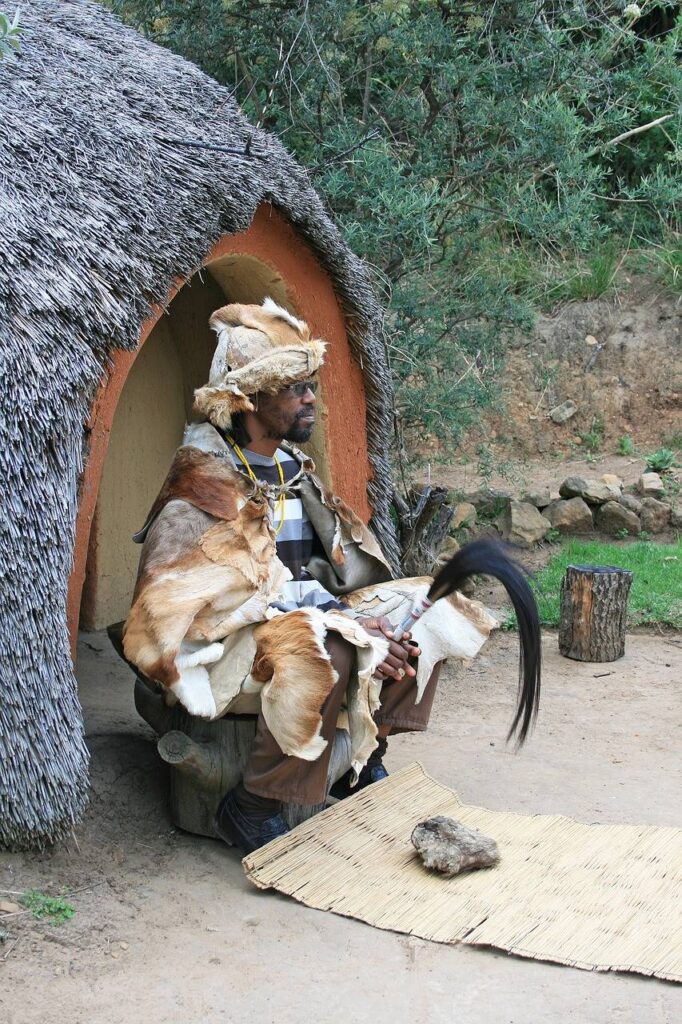
😃🤔🤯 Why would it be? What are possible reasons?
Syntratism vs. split-level Christianity
The doctor can explain HOW (bacteria, infection…) someone got sick but folk religion answers WHY (spirits, curse…) someone got sick.5
Folk religion tends to be syncretistic (I need to know why). Western faith is often split-level Christianity (I know how).6
Syncretism is when ideas or practices from different beliefs mix together, creating something new that combines elements from each. Christian forms can take on animistic meanings, for example.
Split-level Christianity refers to a faith that compartmentalizes spiritual beliefs and practices, often dividing them from everyday life. It suggests a dichotomy between religious involvement and secular pursuits rather than integrating faith into all aspects of life.
The 🐸
High religion deals with fundamental questions like purpose and the afterlife, while folk religion is mostly concerned with everyday life.
Another aspect to consider is that high or formal religion tends to rely on written texts, such as laws and abstract faith statements, while folk religion predominantly relies on oral traditions.

😃🤔🤯 Take a few moments to reflect on the picture above. How would a person from the festival on the left feel if invited to a Bible study like on the right side?
Formal religion is often disconnected from people’s innate orality. We call this vacuum the Folk Religion Orality Gap (FROG 🐸).7
Traits of Orality
A little history lesson

When the Bible came off Gutenberg’s printing press about 500 years ago, he didn’t know that his invention would forever change the world. For the first time in history, the written page was within reach of the illiterate masses and even fueled the Protestant Reformation. Truth and information that previously came from the mouths of sages and songs were now stored and studied in books and libraries. Before, everyone was highly reliant on oral communication. Now, the West took a new path. The path of reading, writing, and reasoning. Western colonial powers capitalized on this new path and rapidly advanced it through education, industry, and scientific discoveries.

As Colonial powers gobbled up the planet’s resources, the Good News also reached every part of the world where Christ was unknown. Western missionaries built hospitals, churches, and schools as they passed on the Good News using the same methods they used to learn it – reading & writing. After Euro-Christians developed 2-300 years of, they expected those whom they called “savages” in the tribes of Africa, Asia, and South America to convert to the church through Western thinking and Western forms of Christianity. Converts were pressured to dress like the West, talk, learn, sing, and lead with Western innovations. They were “converts to Christianity” but never fully understood the Kingdom of God and His church.
😃🤔🤯 With the history in mind, take a 🎦video (as a group or if you are alone or by alternating roles) of a colonial explorer/missionary trying to “civilize” a “savage” from South America, Africa, or Asia.
5 clusters of the orality continuum
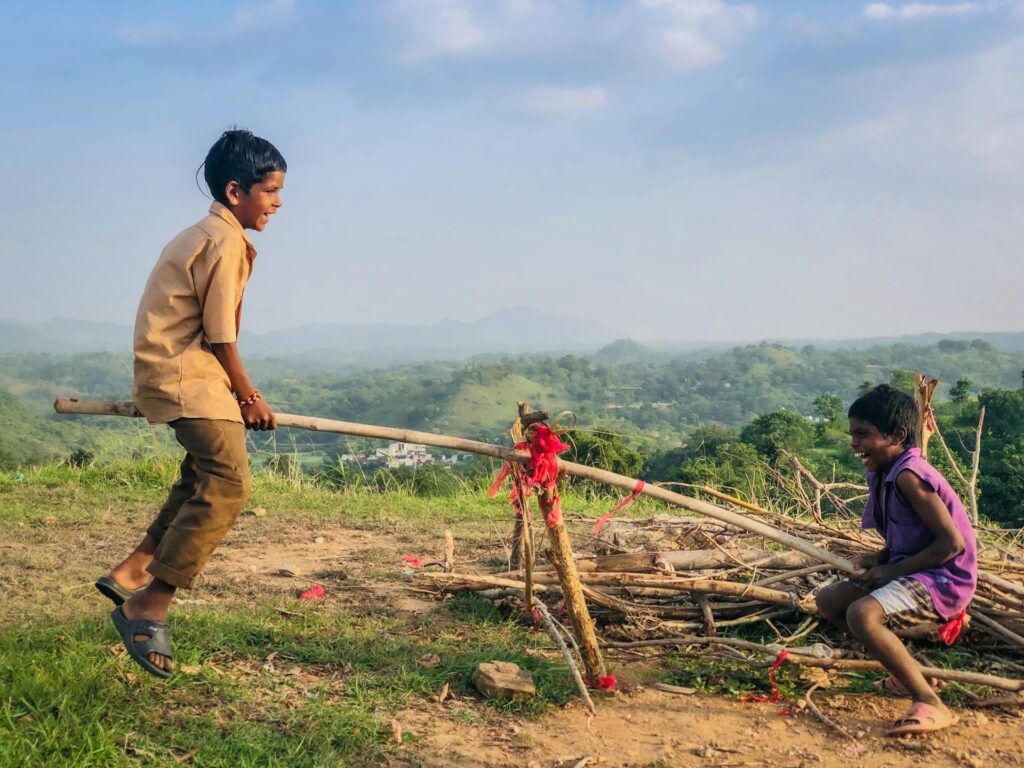
As we already established in Lesson 1, orality is not the same as being illiterate, nor is it the opposite of textuality.
It is rather a preference for oral communication. Still, even people who prefer to learn from print text are oral, just less so.
All of us are on a continuum that ranges from very high (HOR) to very low orality reliant (LOR). It is like the weight distribution of a ⚖️balance scale or a seesaw.
😃🤔🤯 On a scale from 1-10 (10 being 100% oral), where would put yourself on the continuum? Explain why?
Orality is a way of being and part of our worldview. As such, our reliance on orality can be observed and measured in different aspects of our behavior, values, and beliefs.
The illustration shows 5 different areas (clusters) where we can observe differences between HOR and LOR people and cultures across the globe.
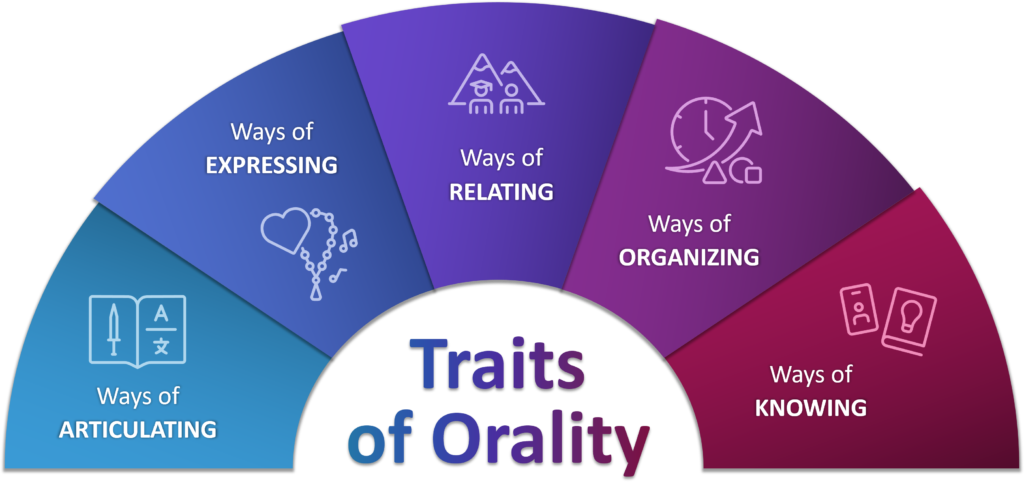
Ways of articulating 💬
The orality traits linked to language, narrative, and words that help people articulate the things around us so that we gain a shared understanding.
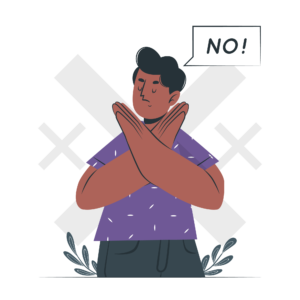
HOR: People tend to think more generally/descriptively on one side of the lingual spectrum.
LOR: On the other side of the spectrum, people tend to value more precise/technical expressions.
Ways of expressing 🎨
How we display our inner speech through arts, rituals, and symbols. They generate the power to penetrate the heart and transform the mind by engaging all senses.
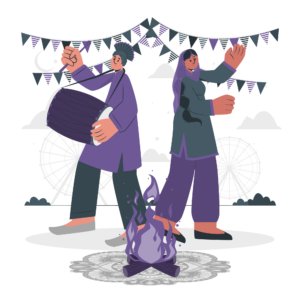
HOR: On one end of the spectrum, people generally tend to immerse themselves in the medium of their own cultural expressions.
LOR: On the other side of the spectrum, people observe the medium and its message more like a performance.
Ways of relating 👨👩🏽👧🏻👦🏻
The orality traits of identity, respect, and environment describe our connectedness within our world and community.

HOR: People generally function more holistically on one side of the spectrum – they are a part of the whole.
LOR: On the other side of the spectrum, people tend to see the parts more than the whole through clearly delineated categories and compartments.
Ways of organizing ⏰
The traits that describe our sense of time, need for change, and how we classify things in our world. They represent how we tend to frame and manage the patterns and movement of life together.
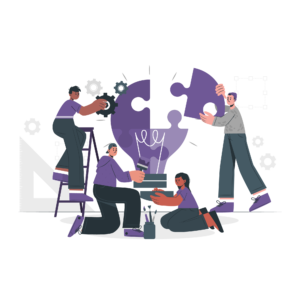
HOR: On one side of the spectrum, people generally frame things closely connected to everyday life.
LOR: On the other side of the spectrum, people tend to work well with abstract principles and concepts.
Ways of knowing 💡
These traits require a more complex set of factors. They represent how we capture and process a message, how people really learn, and their preferred ways of remembering a message.

HOR: On one side of the spectrum, people gravitate to familiar patterns, repetition, and non-linear logic.
LOR: On the other side, people tend to need a line of reasoning that progresses linearly from point 1 to point 10.
15 traits of orality
Each cluster can be further subdivided into the 15 traits of orality. These 15 traits or characteristics are loosely based on Walter Ong’s Psychodynamics of Orality.8
While this grouping of the 15 traits of orality represents one approach that is based on current research, it’s essential to recognize that there are various methods of categorization.
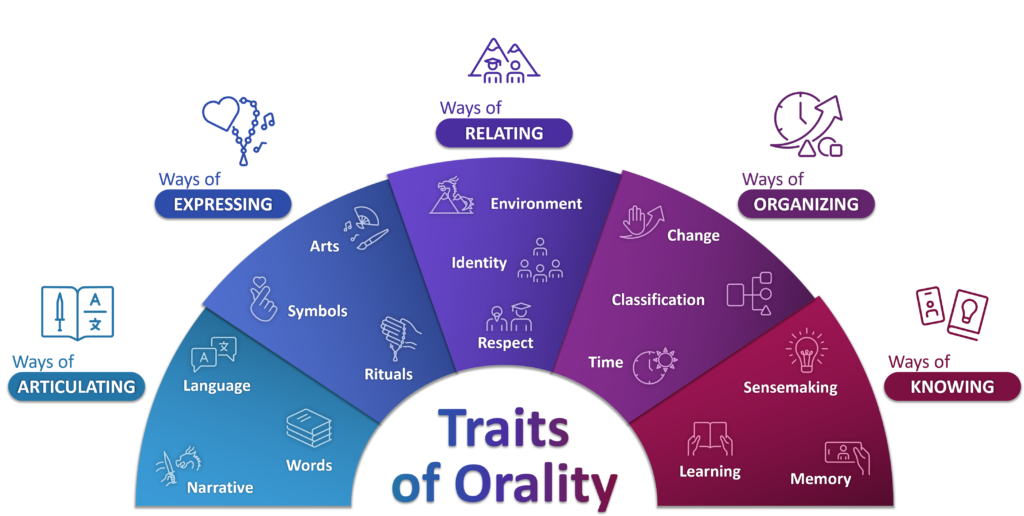
Furthermore, the various traits cannot be neatly separated, as they often overlap and are interconnected.
Utilizing the 15 traits of orality, we can 📏measure the orality reliance of any people group.
Jesus and Orality
That Jesus was a master storyteller and excellent teacher is widely known.
😃🤔🤯 List as many examples as you can find of Jesus using oralities to communicate the message of the Kingdom.
Jesus knew his audience
📔 Read Matthew 5 and 12:1-14.
😃🤔🤯 What is Jesus’ audience in Matthew 5 and 12? How did Jesus introduce passages from the Old Testament to different audiences? Can you spot the difference?
Jesus knew the orality reliance of his audience
When preaching to simple people, Jesus used HOR communication methods.
You have heard that it was said, ‘You shall not commit adultery.’
Matthew 5:27, ESV (cf. v. 21, 31, 33, 38, 43)
When talking to teachers, He used LOR communication methods they could not reject.
[Jesus] said to [the Pharisees], ‘Have you not read what David did when he was hungry…’
Matthew 12:3, ESV (cf. v. 5)
Neither HOR nor LOR is superior; they represent preferences on a spectrum. Teachers and messengers are responsible for understanding their audience’s orality reliance and adapting their message accordingly.
😃🤔🤯 What are the implications for your ministry?
GOMAP
🎞️
Watch the GOMAP introduction.this discussion about the definition of orality.
The Global Orality Mapping Project (GOMAP) is a survey developed to quantify the orality preferences of people groups. A series of questions helps to access people groups, resulting in an Orality Quotient (OQ).
Based on the OQ, recommendations are given for instructional design, discipleship, or evangelism based on the 7 disciplines of orality used by Jesus in his ministry.
😃🤔🤯 Go to the GOMAP survey and fill it in for the people group you are working with. It will be foundational for the upcoming lessons.
Inform & transform
The figure below shows how all pieces of this orality training come together.
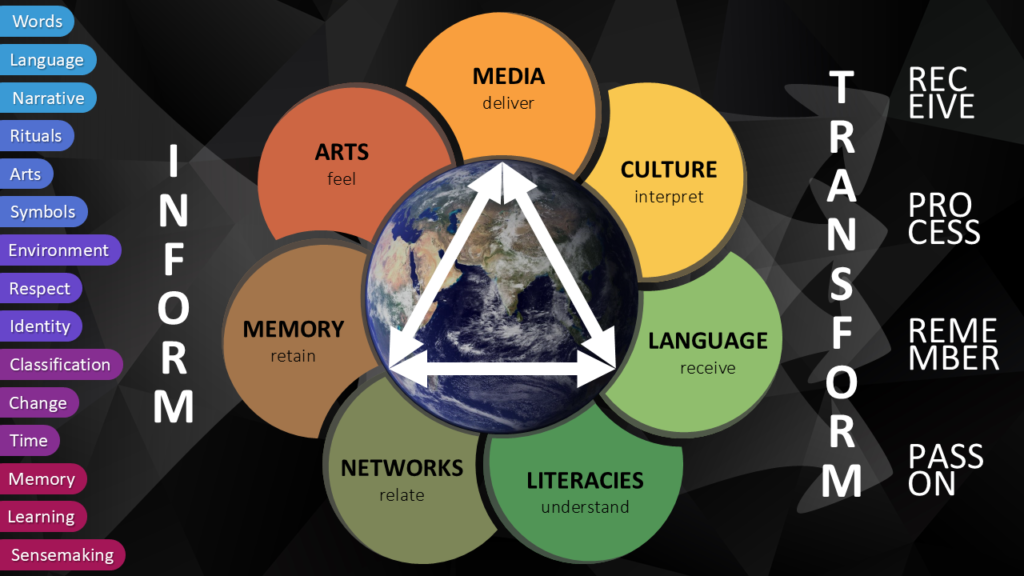
The 15 Traits of Orality INFORM how to FRAME the Good News using the 7 Disciplines of Orality, which will TRANSFORM how people receive, process, remember, and pass on the Good News.
Footnotes
- 📃 Grant Lovejoy, “The Extent of Orality: The Word Become Flesh,” Orality Journal, no. The Word Become Flesh (2012): 11–40. ↩︎
- 🌐 World Bank, “70% of 10-Year-Olds Now in Learning Poverty, Unable to Read and Understand a Simple Text,” 2022. ↩︎
- 📃 Charles Madinger, “Applications of the Orality Discussion,” Evangelical Missions Quarterly 53, no. 1 (2017): 55. ↩︎
- 📃 Paul G. Hiebert, “The Flaw of the Excluded Middle,” Missiology: An International Review 10, no. 1 (1982): 35–47. ↩︎
- 📖 Michael Wesch, The Art of Being Human: A Textbook for Cultural Anthropology (Manhattan, KS: New Prairie Press, 2018), 49. ↩︎
- 📖 W. Jay Moon, Intercultural Discipleship: Learning from Global Approaches to Spiritual Formation, Encountering Mission (Grand Rapids, Michigan: Baker Academic, 2017), 34–36. ↩︎
- 📃 Jay Angeles and Danyal Qalb, “Deterring Syncretism: The Use of Orality to Close the Gap between Formal and Folk Religion,” Journal of Asian Mission 23, no. 2 (2022): 39–63. ↩︎
- 📖 Walter J Ong, Orality and literacy: the technologizing of the word (London: NY: Routledge, 2002). ↩︎
🎉Congratulations, you finished this lesson!
Leave additional resources and ideas for others in the 💬comment section below!

Leave a Reply